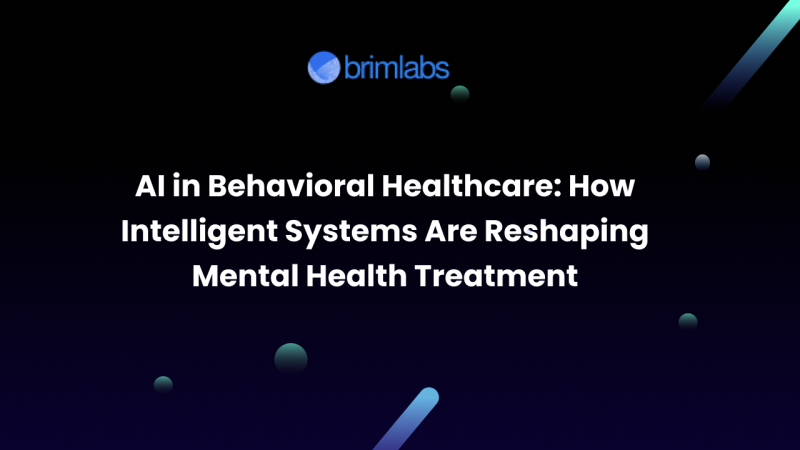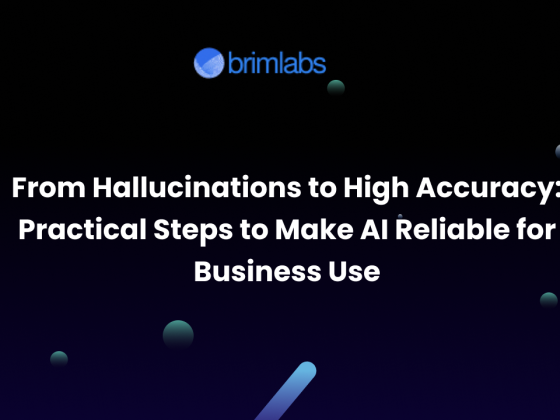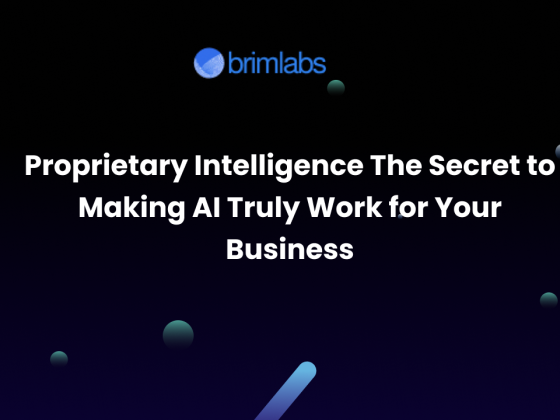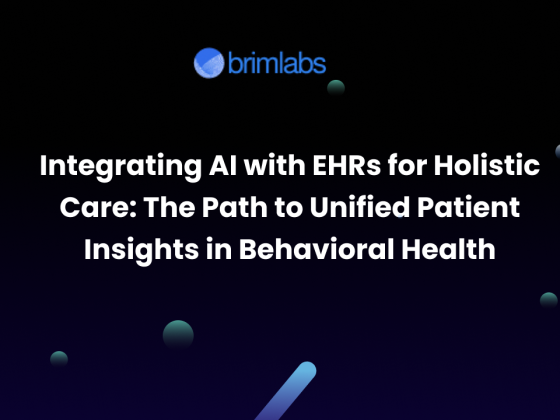AI is moving from promise to practice across healthcare, and behavioral health is one of the most meaningful frontiers. Mental health care has long struggled with access, personalization, measurement, and continuity of care. Many people wait weeks for an appointment, providers are overloaded with documentation, and outcomes can be difficult to track between sessions. Intelligent systems are beginning to change this picture by augmenting clinicians, extending care beyond the clinic, and making the experience more timely, data-informed, and human-centered.
This guide unpacks how AI is transforming behavioral healthcare across screening, triage, diagnosis support, care planning, therapy augmentation, remote monitoring, crisis detection, and population-level analytics. We will explore real-world patterns that work, the technical building blocks, the risks and safeguards that matter, and a practical adoption roadmap for providers and digital health leaders.
Why behavioral health is primed for AI
Behavioral health presents a unique mix of needs that align well with AI capabilities.
- Unmet demand and long wait times. Many regions face a mismatch between the number of clinicians and the number of people seeking care. Intelligent triage and self-guided support can bridge gaps while preserving clinician bandwidth for higher acuity cases.
- High variability in symptom presentation. Depression, anxiety, trauma, and comorbidity often blend together. Pattern recognition across multimodal signals can surface insights that complement clinician judgment.
- Treatment adherence and support between visits. The work of recovery often happens outside the session. AI-powered tools can deliver cognitive and behavioral exercises, micro-interventions, and nudges that are timely and contextual.
- Documentation burden. Clinicians spend substantial time on notes and care coordination. Ambient AI and workflow automation reduce administrative load so that more time returns to patient care.
- Measurement challenges. Outcomes in mental health are multidimensional and evolve slowly. AI can help transform raw signals into tracking metrics that are sensitive to change and personalized to the individual.
What intelligent systems can do today
AI is not a single tool. It is a collection of capabilities that can be composed into end-to-end care experiences. The following patterns are already proving useful in practice.
- Intelligent screening and triage: AI assistants conduct structured screenings using validated instruments such as PHQ 9 and GAD 7, summarize results in plain language, and route the case to the right level of care. Natural language understanding allows free-text concerns to be mapped to standardized symptom clusters.
- Risk stratification and early warning: Models ingest intake notes, prior history, appointment patterns, and passive signals to estimate risk for deterioration or dropout. These systems generate proactive alerts that help care teams intervene before crisis moments arise.
- Therapy augmentation and homework support: Chat-based companions deliver cognitive behavioral exercises, exposure hierarchies, journaling prompts, and mindfulness training. They keep a record of exercises completed and gently coach users through the steps agreed upon in session.
- Ambient note capture for clinicians: During sessions, ambient AI transcribes, diarizes, and drafts a first pass note aligned to the clinician’s template. Suggested problem lists, goals, and interventions speed up documentation while the clinician remains fully in control of the final record.
- Personalized care pathways: Reinforcement learning and retrieval-based systems match people to interventions that fit their preferences, language, culture, and clinical profile. Over time, pathways adapt based on outcomes and engagement patterns.
- Remote monitoring: With consent, systems collect mood check-ins, sleep and activity data, and simple voice or text reflections. Models look for changes in affect, energy, or social patterns that may signal relapse risk.
- Crisis detection and escalation: Classifiers detect mentions of self-harm or acute distress in text or speech and escalate to human responders with context, location when available, and a snapshot of recent interactions. Safety policies define when to act and how to reduce false positives.
- Population health analytics: At the system level, aggregated and privacy-preserved data help leaders understand demand, bottlenecks, dropout drivers, and outcomes across programs. This informs staffing, program design, and value-based care contracts.
Core technical building blocks
Behind these capabilities sit a set of modular components. Leaders do not need to build everything from scratch, but understanding the building blocks helps with vendor evaluation and system design.
- Language models for understanding and generation: LLMs interpret free text, summarize sessions, and conduct conversational assessments. Smaller task-specific models can be fine-tuned for screening scripts, safety classification, and note templates.
- Retrieval augmented generation: Rather than letting models improvise, retrieval systems ground responses in validated content such as therapy manuals, clinical guidelines, and organization policies. This reduces hallucinations and maintains alignment with approved practices.
- Structured assessment engines: Decision logic engines administer validated instruments, score them, and map scores to action recommendations tied to your clinical protocols.
- Multimodal signal processing: Text, audio, and sensor data each carry useful signals. Pipelines transform raw inputs into features such as sentiment, speech rate, sleep regularity, and activity variability that feed risk and progress models.
- Identity, consent, and privacy layers: Authentication, role-based access control, fine-grained consent capture, and audit logs are non-negotiable. Encryption in transit and at rest, along with secure key management, protects sensitive data.
- Orchestration and workflow automation: Care journeys involve many steps. Orchestrators coordinate tasks such as sending a screening, creating a case, drafting a note, notifying a supervisor, and scheduling follow-ups.
- Human in the loop oversight: Review queues allow clinicians to accept, edit, or reject AI outputs. Feedback loops are essential for quality, safety, and model improvement.
Where AI fits across the care journey
Think of behavioral care as a series of stages. AI can support each stage without replacing the clinician or reducing the importance of the human relationship.
Access and intake
- Answer questions about services, insurance, and wait times with a friendly assistant who responds in clear, non-clinical language.
- Conduct a short screener to route people to crisis lines, same-day support, group programs, or scheduled therapy.
- Capture preferred language, communication style, and accessibility needs to personalize the experience from the start.
Assessment and diagnosis support
- Convert unstructured stories into structured histories that map to DSM-related categories while avoiding automatic diagnosis.
- Suggest differential considerations and rule out items for the clinician to evaluate.
- Highlight social determinants of health and contextual stressors that might influence symptoms and care planning.
Care planning
- Translate goals discussed in the session into clear objectives and steps.
- Recommend evidence-aligned interventions and resources with links to your own care library.
- Propose a follow-up cadence and homework plan based on client preferences and risks.
Treatment and between-session support
- Provide daily micro practices such as thought records, breathing exercises, and exposure steps.
- Offer just-in-time coping tips when stress signals spike, for example, after a poor sleep night or a missed dose.
- Remind clients of upcoming sessions and celebrate adherence to build momentum.
Measurement and progress
- Track validated scales alongside engagement metrics.
- Identify when progress stalls and suggest a care plan review.
- Generate a simple progress narrative for the client and a concise clinical summary for team reviews.
Transition and relapse prevention
- Build a personalized relapse plan with early warning signs, coping actions, and support contacts.
- Set up monthly check-ins to maintain gains.
- Surface community resources to sustain social and lifestyle support.
Ethics, safety, and equity
Behavioral health is deeply personal. As we introduce AI, we must uphold the highest standards of dignity, safety, and fairness.
- Human primacy: AI augments but does not replace clinicians. Critical decisions remain with licensed professionals. Clients should always have clear paths to a human.
- Transparency and informed consent: Make it clear when AI is being used, what data is collected, and how outputs will be applied. Consent should be specific, revocable, and documented.
- Privacy by design: Limit data collection to the minimum needed. Use encryption for data in transit and at rest. Access should be role-based and regularly audited. De identification should be applied for analytics.
- Clinical validation and continuous monitoring: Screeners, risk models, and therapy prompts must be evaluated for sensitivity, specificity, and clinical utility within your population. Build dashboards to watch for drift and harm.
- Bias detection and mitigation: Test models across demographics and social contexts. Employ diverse data, fairness constraints, and regular bias audits. Provide clinicians with context so they can interpret outputs responsibly.
- Safety classifiers and escalation playbooks: Always run safety checks for self-harm, violence, and abuse. Define escalation paths that include warm handoffs to crisis lines or clinical supervisors. Record outcomes to improve playbooks.
- Accessibility and inclusion: Support multiple languages, low literacy modes, and assistive technologies. Respect cultural norms and incorporate community voices in design.
Common pitfalls and how to avoid them
- Deploying tech without workflow fit: Success comes from integrating within existing clinical pathways and EHR systems. Co-design with clinicians from day one.
- Ignoring data quality: Risk models fail without consistent documentation and labeling. Start with a small set of required fields and enforce them in the workflow.
- Overpromising automation: Position AI as an assistant. Keep humans in the loop. Set clear boundaries for what the system will and will not do.
- Fragmented point solutions: Choose tools that can compose into a coherent journey. Use open standards for identity, data exchange, and audit.
- Skipping governance: Establish a multidisciplinary governance group with clinical, privacy, security, and operations representation. Review incidents and approve model updates.
A practical adoption roadmap
Here is a stepwise plan that behavioral health organizations can use to move from exploration to sustained impact.
Phase 1: Discovery and safety foundation
- Form a steering group that includes clinical leaders, privacy and security, and operations.
- Define outcome targets and use cases to evaluate, for example, intake triage and ambient note drafting.
- Complete a privacy and security review. Confirm encryption at rest and in transit, role-based access, audit logs, and data retention policies.
- Run a tabletop exercise for safety incidents, including self-harm detection and escalation.
Phase 2: Pilot with humans in the loop
- Select one or two clinics or programs.
- Train staff on the new workflows and build feedback loops.
- Measure baseline metrics for access, documentation time, and client experience.
- Go live with a small cohort and weekly reviews.
- Iterate on prompts, retrieval sources, and note templates to reach high acceptance rates.
Phase 3: Scale and integration
- Integrate with scheduling, EHR, and analytics systems so that the experience feels seamless.
- Expand to additional cohorts, languages, and programs such as substance use or youth services.
- Introduce remote monitoring and personalized homework to extend the impact between visits.
- Establish quarterly model governance and fairness audits.
Phase 4: Continuous improvement
- Shift from project to platform by consolidating point tools and standardizing an orchestration layer.
- Use population analytics to improve staffing and program design.
- Publish results and participate in peer learning networks to benchmark and raise the bar.
Design principles for AI in mental health
The most successful implementations share a set of human-centered principles.
- Relationship first: AI should create more time for empathy, not less. Measure how much face time is returned to clinicians.
- Plain language always: Avoid jargon. Speak in the words that clients use. Summaries should be concise and compassionate.
- Personal choice and agency: Offer options. Let clients choose voice or text, daily or weekly check-ins, and culturally relevant content.
- Small wins and positive momentum: Celebrate tiny steps such as completing a worksheet or attending a session. Motivation compounds.
- Safety over novelty: New features are exciting, but safety and reliability come first. Build trust through consistent behavior.
Data protection and compliance essentials
Behavioral health data is among the most sensitive information in any system. Leaders should insist on the following safeguards.
- Encryption at rest and in transit with strong key management.
- Role-based access control with least privilege.
- Audit trails for every record view and change.
- Consent capture is tied to specific data uses such as screening, coaching, or analytics.
- Data minimization and retention policies that are easy to understand.
- Regular penetration testing and vendor security questionnaires.
- Alignment with regulatory frameworks such as HIPAA in the United States and GDPR in Europe, plus SOC 2 for operational controls.
Building trust through validation
Trust grows when systems prove they work for your population, not just in general benchmarks. A strong validation plan includes the following.
- Define meaningful endpoints such as reliable improvement on PHQ-9, reduction in no-shows, and clinician time saved on documentation.
- Run an A to B pilot with concurrent cohorts and transparent reporting.
- Collect qualitative feedback from clients and staff to understand the lived experience.
- Share results internally and publish methods where possible to support the field.
The Future: toward truly continuous and compassionate care
As models improve and devices disappear into the background, behavioral health will feel more continuous and supportive. People will receive just-in-time help tuned to their values and goals. Clinicians will focus on the highest value conversations, with mundane tasks handled by machines. Health systems will understand what works for whom and why, and they will invest accordingly.
The vision is not cared for by machines. It is care with more humanity because the machines take on the routine work. People will spend more of their time listening, encouraging, and co-creating change. Outcomes will improve not because someone is being scored by an algorithm, but because the right nudge arrived at the right moment and the right conversation happened sooner.
Step-by-step starter blueprint
If you are ready to begin, here is a straightforward checklist.
- Choose two high-value use cases. Common starting points are intake triage and ambient note drafting.
- Map your current workflow and define success metrics.
- Select a partner who can ground the system in your approved content and connect to your EHR or case management tool.
- Run a four to eight-week pilot with humans in the loop.
- Hold weekly reviews for safety, quality, and experience.
- Iterate prompts, retrieval sources, and templates.
- Scale gradually and add between-session support only after your first use cases are stable.
Conclusion and how Brim Labs can help
AI in behavioral healthcare is not about replacing therapists or standardizing every interaction. It is about extending care, personalizing support, and returning precious time to human connection. The organizations that will lead this transformation are the ones that pair strong clinical governance with careful system design and a relentless focus on dignity, safety, and results.
Brim Labs partners with providers and digital health teams to design and build intelligent behavioral health solutions that put clinicians and clients first. Our teams bring expertise in conversational systems, retrieval-grounded content, ambient documentation, multimodal monitoring, and privacy by design. We co-build with your clinicians, connect to your systems, and move from pilot to impact with clear metrics. If you are exploring intake triage, ambient notes, or between-session companions, we can help you plan and deliver a safe and effective rollout that improves access, outcomes, and experience for everyone involved.
The next chapter of mental health care can be more timely, more compassionate, and more measurable. With thoughtful use of AI, that chapter is already beginning.











